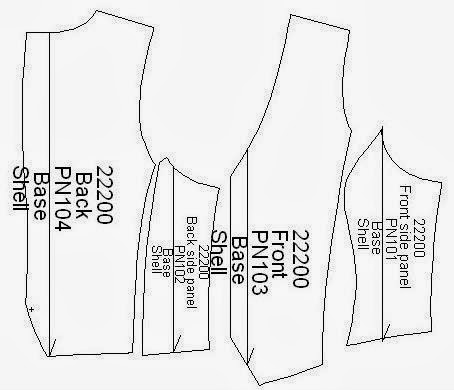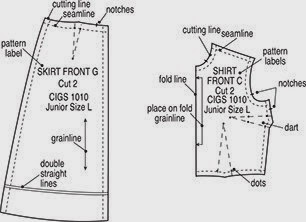Importance of Garment Production Pattern Instructions

Harshani Wijendra
Sri Lanka Institute of Textile & Apparel Technology (SLITA)
Email: harshani_bipasha@yahoo.com
The Instructions to be sent to the Production Department by the Pattern Maker is called Production Pattern Instructions. Following instruction must be marked on apparel pattern, to enable the garment to be made up correctly: -
- Style Number : This refers to the identical number for the garment/ Style.
- Name of the part : This means which part of the panel e.g. Front (FR), Back (BK)
- Size : This will show you how to find your size on a pattern finished garment measurements. E.g. UK Size 12, 14, 16….
- Grain Line : All patterns must have grain lines. It indicates the length direction of fabrics, i.e. during marker making all patterns must be placed to the length direction.
- Balance Mark : Used to ensure patterns are sewn together at the correct points.
- Construction Lines : These include buttonholes, pocket placing etc.
Other than above mentioned Instructions there are some more. And they are:
Production Pattern
Seam lines : On single-size patterns, the seam line is indicated by a dashed line. On multisize patterns, seam lines are not shown or, in some cases, only the seam line for the smallest size is marked.
Double straight lines: These indicate the best location on the pattern piece for adding or subtracting length from the garment.
Dots : These small solid circles are used to mark locations or points to match. Patterns may include both small and large dots and sometimes squares. Drill holes, shown as a circle enclosing a +, are like dots and may be used to mark locations within a pattern piece (for example, a patch pocket location).
Notches : Whether single or in groups of two or three, these diamonds or triangles both indicate matching points and help differentiate between seam lines. For example, a skirt back often has a triple notch along the center back seam line and a double notch at the side seams, eliminating confusion that might result in sewing the center back seam line to the side of a skirt front.
Darts : These fitting features are shown as long, narrow triangles extending into the garment body. The dart center is sometimes indicated by a solid line; the dart “legs” are dashed. The dart point and seam line intersections are often marked with dots.
Pleats and tucks : Whether functional or decorative, these are marked with solid and dashed lines on the pattern pieces, sometimes in conjunction with arrows that show the folding direction. Consult the guide sheet for specific instructions on how to form the pleat or tuck.
 |
| Picture with Instructions marked on a pattern board |









{ 0 comments... read them below or add one }
Post a Comment